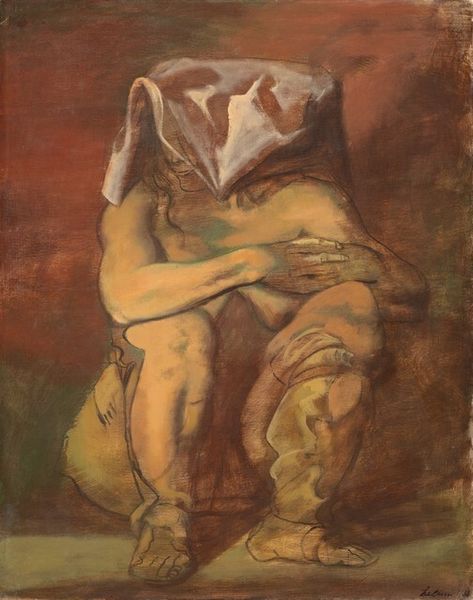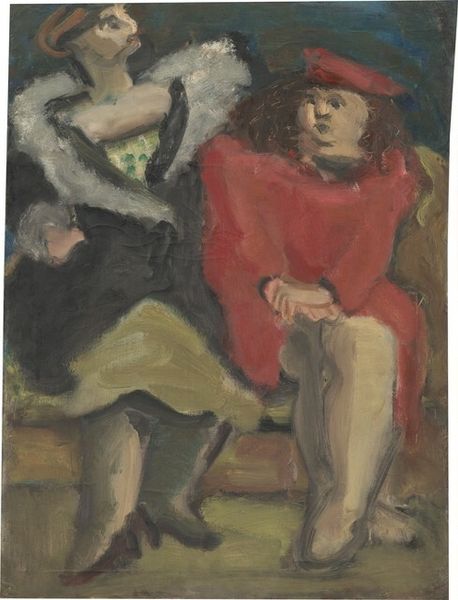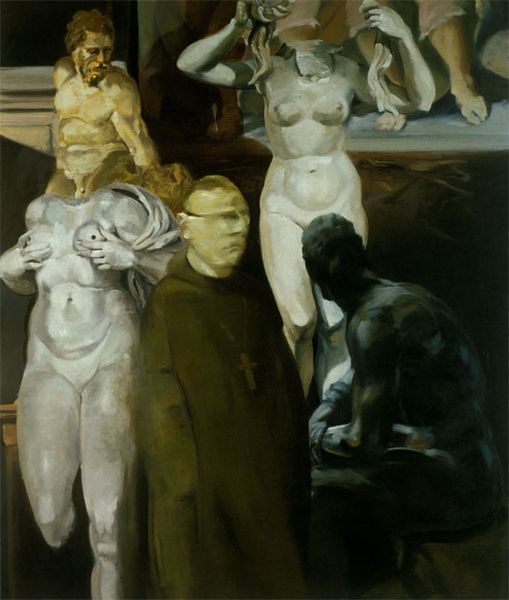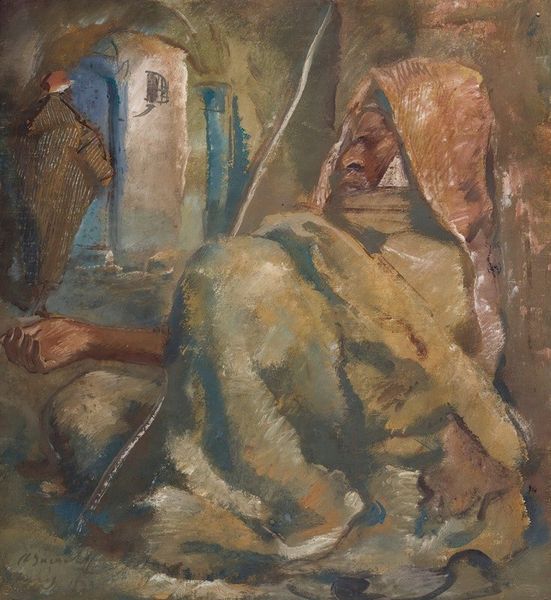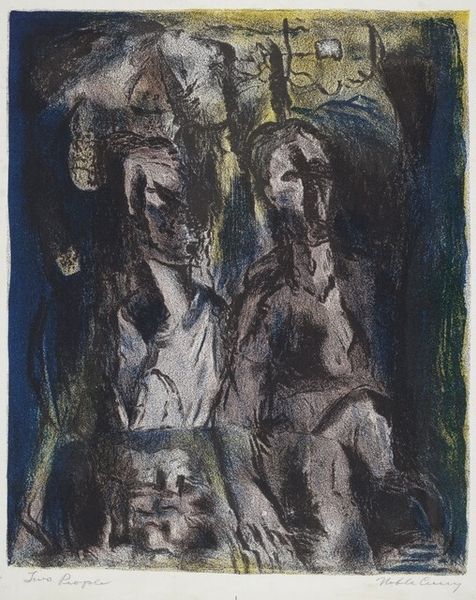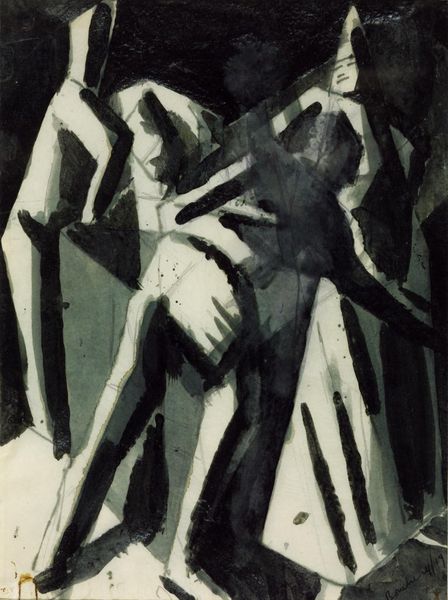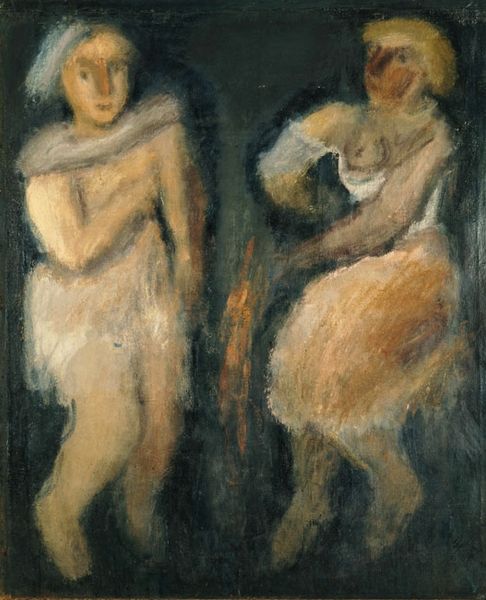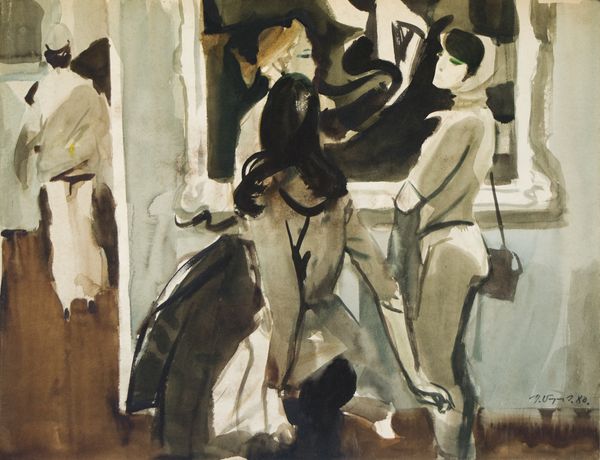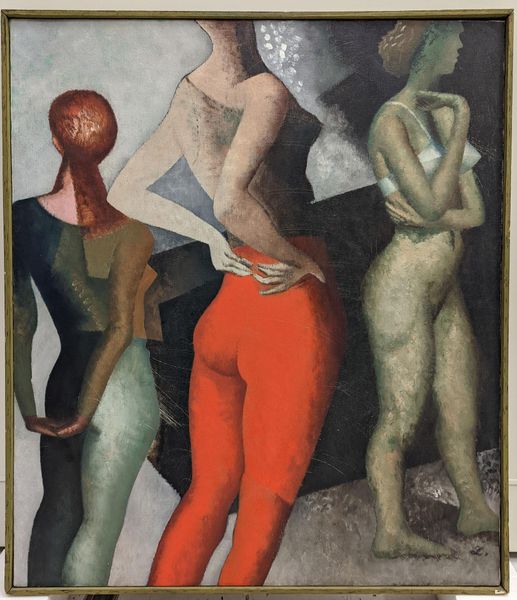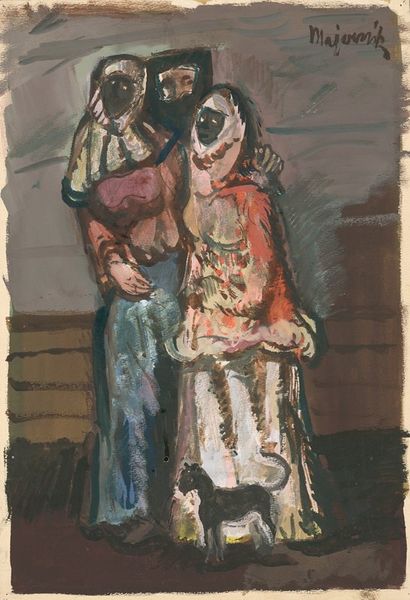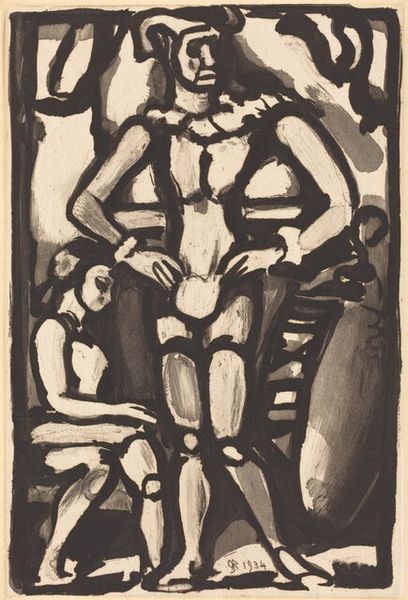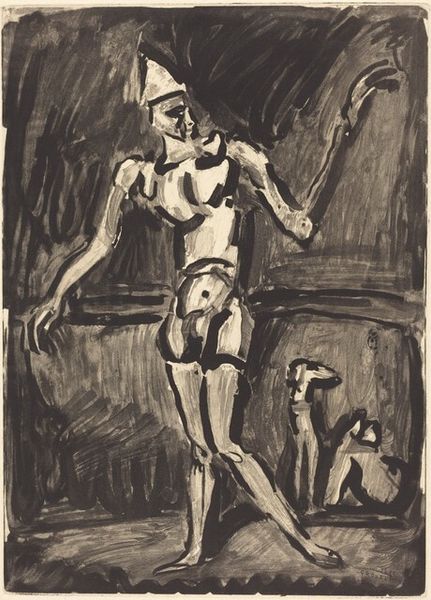
Dimensions: support: 1524 x 914 mm frame: 1603 x 989 x 30 mm
Copyright: © The estate of Hans Feibusch | CC-BY-NC-ND 4.0 DEED, Photo: Tate
Editor: This large oil painting from 1939 is simply called "1939" by Hans Feibusch, currently residing in the Tate Collection. The figures seem caught in a moment of intense emotion, perhaps despair. What symbols or deeper meanings do you see embedded in this work? Curator: The three figures are archetypes, perhaps representing suffering humanity on the eve of World War II. The raised faces evoke classical depictions of martyrs, while the figure in harlequin garb adds a layer of tragic irony – the fool witnessing the world's folly. Does the stark lighting remind you of anything? Editor: Yes, like a theatrical spotlight, emphasizing the drama. The harlequin figure strikes me as particularly haunting. Curator: Indeed. Feibusch, himself a refugee from Nazi Germany, used such images to channel collective anxiety and moral crisis. The harlequin's painted face, a mask concealing deeper pain. What do you make of that? Editor: I see now how the symbols, like the mask, carry a heavy cultural weight. It definitely makes me look at the painting differently. Curator: Visual symbols often reveal hidden layers of meaning. Understanding their historical and psychological context allows us to connect with the artwork on a more profound level.
Comments
Join the conversation
Join millions of artists and users on Artera today and experience the ultimate creative platform.
tate 7 months ago
⋮
Hans Feibusch moved from Berlin to London after the Nazi seizure of power and, along with several of the first AI members, attended Fitton’s Central School lithography classes in 1933. His painting 1939 is similar to Resurrection, a work he completed at speed four years later for inclusion in the AIA exhibition For Liberty. 1939, painted on the brink of war, seems to depict figures beset by agony. Resurrection was interpreted at the time as suggestive of ecstasy and possible liberation. Gallery label, September 2024
